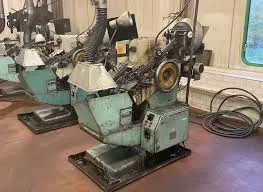
-
 Afrikaans
Afrikaans -
 Albanian
Albanian -
 Amharic
Amharic -
 Arabic
Arabic -
 Armenian
Armenian -
 Azerbaijani
Azerbaijani -
 Basque
Basque -
 Belarusian
Belarusian -
 Bengali
Bengali -
 Bosnian
Bosnian -
 Bulgarian
Bulgarian -
 Catalan
Catalan -
 Cebuano
Cebuano -
 Corsican
Corsican -
 Croatian
Croatian -
 Czech
Czech -
 Danish
Danish -
 Dutch
Dutch -
 English
English -
 Esperanto
Esperanto -
 Estonian
Estonian -
 Finnish
Finnish -
 French
French -
 Frisian
Frisian -
 Galician
Galician -
 Georgian
Georgian -
 German
German -
 Greek
Greek -
 Gujarati
Gujarati -
 Haitian Creole
Haitian Creole -
 hausa
hausa -
 hawaiian
hawaiian -
 Hebrew
Hebrew -
 Hindi
Hindi -
 Miao
Miao -
 Hungarian
Hungarian -
 Icelandic
Icelandic -
 igbo
igbo -
 Indonesian
Indonesian -
 irish
irish -
 Italian
Italian -
 Japanese
Japanese -
 Javanese
Javanese -
 Kannada
Kannada -
 kazakh
kazakh -
 Khmer
Khmer -
 Rwandese
Rwandese -
 Korean
Korean -
 Kurdish
Kurdish -
 Kyrgyz
Kyrgyz -
 Lao
Lao -
 Latin
Latin -
 Latvian
Latvian -
 Lithuanian
Lithuanian -
 Luxembourgish
Luxembourgish -
 Macedonian
Macedonian -
 Malgashi
Malgashi -
 Malay
Malay -
 Malayalam
Malayalam -
 Maltese
Maltese -
 Maori
Maori -
 Marathi
Marathi -
 Mongolian
Mongolian -
 Myanmar
Myanmar -
 Nepali
Nepali -
 Norwegian
Norwegian -
 Norwegian
Norwegian -
 Occitan
Occitan -
 Pashto
Pashto -
 Persian
Persian -
 Polish
Polish -
 Portuguese
Portuguese -
 Punjabi
Punjabi -
 Romanian
Romanian -
 Russian
Russian -
 Samoan
Samoan -
 Scottish Gaelic
Scottish Gaelic -
 Serbian
Serbian -
 Sesotho
Sesotho -
 Shona
Shona -
 Sindhi
Sindhi -
 Sinhala
Sinhala -
 Slovak
Slovak -
 Slovenian
Slovenian -
 Somali
Somali -
 Spanish
Spanish -
 Sundanese
Sundanese -
 Swahili
Swahili -
 Swedish
Swedish -
 Tagalog
Tagalog -
 Tajik
Tajik -
 Tamil
Tamil -
 Tatar
Tatar -
 Telugu
Telugu -
 Thai
Thai -
 Turkish
Turkish -
 Turkmen
Turkmen -
 Ukrainian
Ukrainian -
 Urdu
Urdu -
 Uighur
Uighur -
 Uzbek
Uzbek -
 Vietnamese
Vietnamese -
 Welsh
Welsh -
 Bantu
Bantu -
 Yiddish
Yiddish -
 Yoruba
Yoruba -
 Zulu
Zulu
HSN Code for Exporting Thread Rolling Machines Explained in Detail
Understanding Thread Rolling Machines and Their HSN Code for Export
Thread rolling machines play a crucial role in the manufacturing and assembly industries by producing high-quality threaded components. These machines are essential for creating strong, durable threads on materials such as metal, enabling the efficient assembly of mechanical parts. As the demand for precision-engineered components continues to grow globally, understanding the specific Harmonized System Nomenclature (HSN) code for exporting thread rolling machines becomes increasingly important.
What Are Thread Rolling Machines?
Thread rolling machines are specialized equipment designed to create threads on cylindrical materials. Unlike traditional cutting methods that remove material to form threads, rolling processes deform the material, resulting in stronger threads with improved fatigue resistance. These machines use dies to impress the desired thread profile onto the workpiece, and they can produce a wide range of thread sizes and types.
The advantages of using thread rolling machines include increased production speed, lower material wastage, and enhanced thread strength. In many cases, they are used in the automotive, aerospace, and construction industries where high precision and durability are paramount.
The HSN Code Explained
The Harmonized System (HS) is an internationally standardized system of names and numbers for classifying traded products. The HSN code consists of six digits, which can be expanded upon for national customs purposes. For exporters and importers, knowing the correct HSN code for a product is essential for smooth international trade, as it affects tariffs, trade statistics, and compliance with regulations.
For thread rolling machines, the HSN code is typically categorized under the heading for machinery and mechanical appliances, specifically in the section that covers machinery for working metal. This categorization helps customs officials identify the product and apply the correct regulations and tariffs associated with its import and export.
thread rolling machine hsn code exporter

HSN Code for Thread Rolling Machines
While the specific HSN code may vary slightly based on the country of export or import, as of recent updates, thread rolling machines generally fall under the HSN code 8462. This code is designated for “Machine tools for working metal, without removing material.” More specifically, the subcategory for rolling machines often is classified under the 8462.99 segment, which encompasses other types of machine tools that are not elsewhere specified.
When engaging in international trade, exporters must ensure they use the correct HSN code to avoid delays, fines, or confiscation of goods. Incorrect classification may lead to misunderstandings with customs officials and can impact duty calculations significantly.
Importance of Accurate HSN Classification
Accurate HSN classification is vital for several reasons. Firstly, it influences the duties and tariffs that must be paid during import processes. Misclassifying goods can lead to overpayment or underpayment of these fees. Secondly, it ensures compliance with international regulations, which is crucial for maintaining good trade relations and avoiding legal issues. Lastly, accurate classification contributes to more reliable trade statistics, helping businesses and governments make informed decisions based on a clear understanding of trade patterns.
Conclusion
In conclusion, thread rolling machines are essential for producing high-quality threaded components used across various industries. Understanding the appropriate HSN code is crucial for those involved in the export and import of these machines. Proper classification not only ensures compliance with international trade laws but also facilitates smoother transactions, aiding businesses in maximizing their operational efficiency and market reach. As global demand for precision-engineered components grows, awareness of HSN codes and their implications will continue to play a significant role in the success of international operations in the machinery sector.
